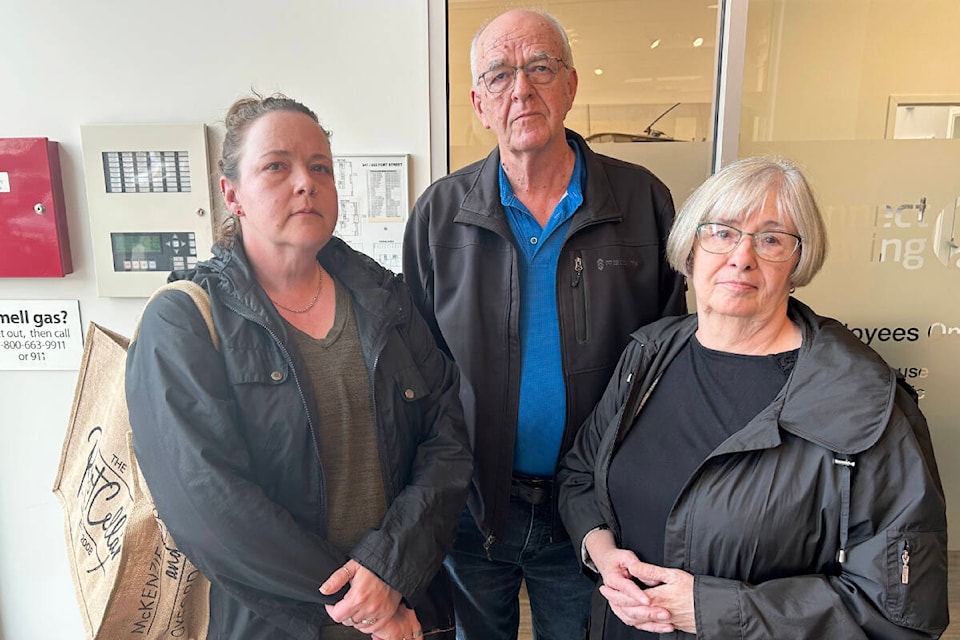A public hearing began Monday (April 15) looking into whether Victoria police officer Ron Kirkwood used appropriate force in the fatal Christmas Day shooting of 43-year-old Lisa Rauch.
Rauch was shot in the back of the head with three rounds of what are supposed to be non-lethal ammunition.
It is alleged that during the 2019 incident, Rauch had barricaded herself in a Pandora Avenue apartment after threatening the unit’s resident with a knife.
The commanding officer during the ensuing standoff testified at the hearing to say that when smoke was seen coming out of the window of the unit, police needed to take action for the safety of Rauch and to make sure firefighters could get into the unit.
Besides the question of the appropriateness of the use of force, there is uncertainty as to whether Kirkwood properly documented the incident.
It had previously been found he may not have adequately completed the required notes, but that because he was acting on the advice legal counsel, he was insulated from responsibility.
Speaking outside the hearing, Rauch’s family questioned why she was shot in the back of the head, and why ammunition intended for riot control — the ammunition in question is called Anti-Riot Weapon Enfield or ARWEN — needed to be used.
The public hearing is an extension of the investigative process of the Office of the Police Complaint Commissioner, an independent officer of the legislature, to review and investigate complaints against police officers. The initial investigations are mandatory in cases where a person is seriously hurt or killed in police custody.
This hearing is to review that investigation, and is being held because it was requested by Rauch’s family.
According to adjudicator Wally Oppal, investigations into police misconduct are done in this way to provide independent oversight of the police, rather than have the police investigate themselves. Oppal is the former B.C. attorney general and a former B.C. Supreme Court justice.
The day began with public hearing counsel Brad Hickford — who operates similarly to a Crown counsel in this proceeding — giving an overview of evidence. This included a recounting of the events that led up to the shooting from the perspective of police.
According to this narrative, on Dec. 25, 2019, police were called to a residence in a supportive housing building operated by the Cool Aid Society in downtown Victoria because a person had reportedly threatened a resident with a knife and barricaded themselves in a unit.
The Cool Aid staff member alleged in the 911 call that it was Rauch who was barricaded in the room, and that she had also been removed from a nearby apartment the day before. A recording of the 911 call was played as evidence.
Hickford said police are expected to testify that the rightful occupant of the unit had reported Rauch was in some form of a drug psychosis at the time due to methamphetamine use.
Once on scene, police worked to create a 360-degree containment zone around the apartment while they waited for the crisis negotiation team.
To stop Rauch from running out into the hallway unexpectedly, they tied off the door handle to the suite. This also effectively trapped her in the unit.
About an hour into the standoff a fire was reported in the suite and the Victoria Fire Department was called. Half an hour later, smoke was seen coming out the window. The sprinkler system had also been activated.
This changed the approach of police, and they decided it was time to act. They approached in a “stack” formation with an officer with the ARWEN device and an officer with a regular firearm lined up behind an officer holding a shield with a viewing port.
The officers at one point put on gas masks due to the smoke and had firefighters join the stack to put out the fire as they entered the unit.
Through the smoke, the officer with the ARWEN weapon fired three rounds.
According to Hickford, police say the visibility was poor, and that they believed they were firing toward Rauch’s stomach, not her head.
In reality, she had been seated on the couch, with the back of her head toward police. After the final of three rounds were fired, Rauch stumbled off the couch and fell to the ground.
The officers then took Rauch down the elevator and outside the building, where they performed CPR. An ambulance attended the scene and took Rauch to the hospital, but she never regained consciousness.
Friends and family of Rauch question this version of events, saying that it seemed as if certain evidence in the case wasn’t being taken into account.
Rauch’s mother Audrey and longtime family friend Lenora Spencer gave the example that they heard from Rauch’s doctors that there was not significant evidence in her lungs of smoke inhalation.
Spencer also pointed to where Rauch was shot — in the back of the head, between the ears and slightly toward the neck — asking how police could have made that error.
Ultimately, the family said they didn’t have much confidence this hearing would change things in terms of Kirkwood’s job, though Audrey said she hoped at least their would be a reconsideration of how the ARWEN rounds are used.
“They’re not gonna come out and say ‘Mr. Kirkwood, you’re fired,’” Rauch’s father Ron said. “They’re not going to do that.”
READ MORE: VicPD officer faces ‘abuse of authority’ allegation over woman’s 2019 death
